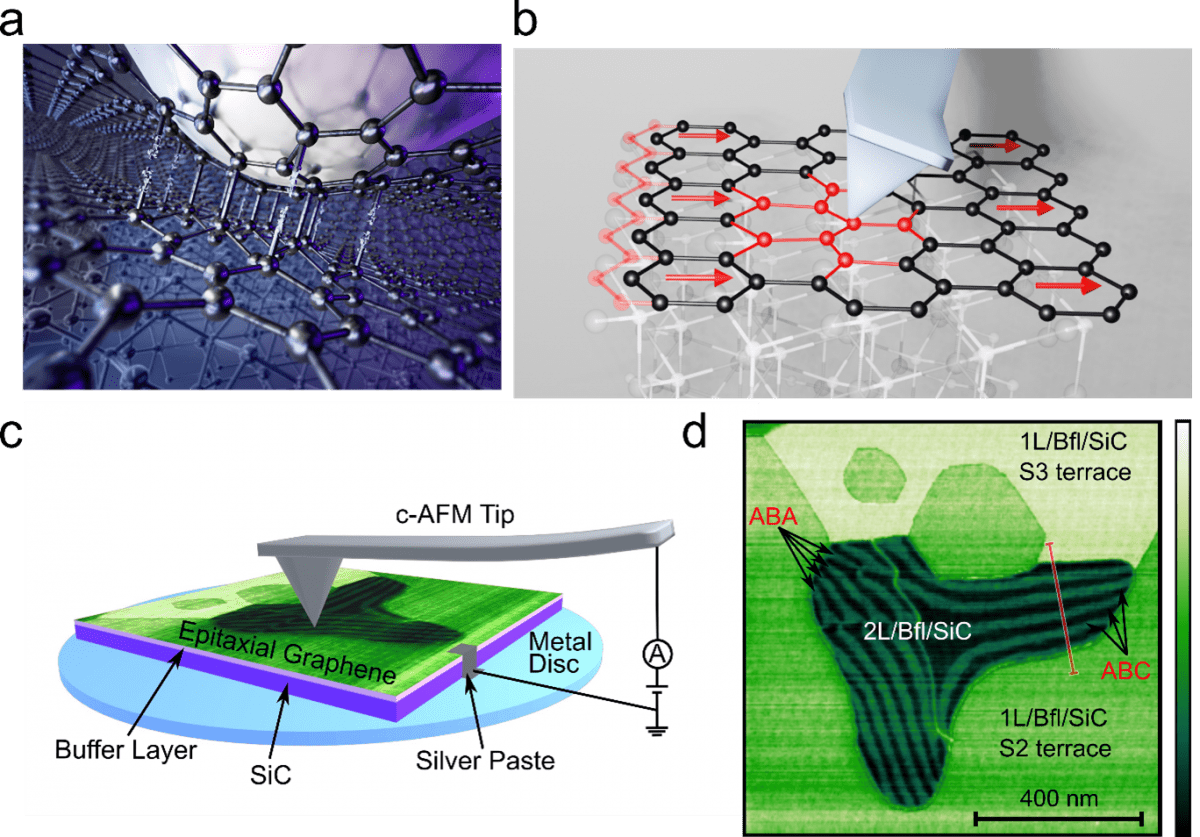Exploring 2D Material Properties with Atomic Force Microscopy
Talk by Dr. Martin Rejhorn
Charles University, Faculty of Mathematics and Physics, Institute of Physics
As the field of low-dimensional materials expands, understanding the nanoscale properties of 1D and 2D materials, especially on a substrate, becomes increasingly critical. 2D materials like graphene are typically exfoliated onto or grown directly on substrates. These films or flakes are only a few atoms thick, so their interaction with the substrate is crucial [1, 2] . This interaction can significantly alter the chemical, mechanical, and electronic properties of the 2D material. Understanding these interfacial properties is essential for fundamental research and technological applications, influencing phenomena from Fermi-level pinning and strain engineering to phase transitions and superlubricity. Additionally, emergent electronic phenomena, such as superconductivity, ferroelectricity, magnetism, and correlated many-body band gaps, have been observed in domains formed by stacking and twisting atomic layers of Van der Waals materials. In graphene, such properties have been noted in ABC stacking domains, typically achieved through exfoliation followed by precise mechanical twisting and alignment. However, this process is both challenging and non-scalable.
In this study, we utilized modulated Atomic Force Microscopy (AFM) techniques to characterize the hardly accessible properties of an atomic layer on a substrate. We observed a pressure-induced sp² to-sp³ phase transition in epitaxial graphene on silicon carbide [2, 3] (Fig. 1a), which has significant potential for new graphene-coating applications in the aeronautics, aerospace, and automobile industries. . [4, 5] . Our findings also indicate that the stacking order and the atomic layer-substrate interaction influence the interfacial transverse shear modulus [6] (Fig. 1b). This modulus is a crucial measurable property for controlling and predicting sliding friction in supported two-dimensional materials. We discovered an inverse relationship between friction and interfacial shear modulus across all investigated graphitic structures, including twisted graphene, bulk graphite, and non-intercalated and intercalated epitaxial graphene samples.
Here, we also show that graphene in the ABC stacking domain can be obtained using a scalable growing technique, namely, the thermal decomposition of silicon carbide. Through conductive atomic force microscopy (Fig. 1c), we identified distinct conductivity patterns in untwisted three-layered epitaxial graphene on silicon carbide grown by the thermal decomposition method. These patterns revealed the presence of ABA and ABC domains, matching the conductivity differences observed in twisted exfoliated graphene and those predicted by density functional theory (Fig. 1d). This study demonstrates the potential of modulated AFM techniques to advance our understanding and manipulation of 2D materials, paving the way for innovative applications in various high-tech industries.

Figure 1: a) Scheme showing the formation of the phase transformed graphene under the indenter. b) Scheme showing a rigid moving of the graphene atomic layer in an elastic regime under the AFM tip. c) Setup of conductive AFM experiment. d) c-AFM image of an epitaxial graphene film with visible stripes in conductivity on a three-layer epitaxial graphene.
Literature:
[1] Cellini, F., et al., Layer dependence of graphene-diamene phase transition in epitaxial and exfoliated few-layer graphene using machine learning. 2D Materials, 2019. 6 (3).
[2] Gao, Y., et al., Ultrahard carbon film from epitaxial two-layer graphene. Nat Nanotechnol, 2018. 13 (2): p. 133-138.
[3] Lavini, F., M. Rejhon, and E. Riedo, Two-dimensional diamonds from sp2-to-sp3 phase transitions. Nature Reviews Materials, 2022. 7 (10): p. 814-832.
[4] Rejhon, M., et al., Impact of metastable graphene-diamond coatings on the fracture toughness of silicon carbide. Nanoscale, 2024.
[5] Rejhon, M., et al., Giant Increase of Hardness in Silicon Carbide by Metastable Single Layer Diamond-Like Coating. Adv Sci, 2023. 10 (6): p. 2204562.
[6] Rejhon, M., et al., Relation between interfacial shear and friction force in 2D materials. Nature Nanotechnology, 2022. 17 (12): p. 1280-1287.
